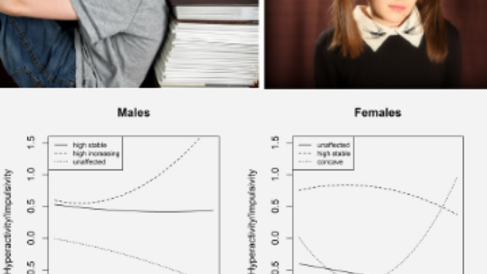
The NHS defines Attention deficit hyperactivity disorder (ADHD) as a behavioural disorder that includes symptoms such as inattentiveness, hyperactivity and impulsiveness. Doctors believe that symptoms of ADHD tend to be noticed at an early age and may become more noticeable when a child's circumstances change, such as when they start school.
Researchers from the Violence Research Centre (VRC) and colleagues from other institutions have published a paper called Sex differences in ADHD trajectories across childhood and adolescence.
Authors Aja Louise Murray (VRC), Tom Booth (University of Edinburgh), Manuel Eisner (VRC), Bonnie Auyeung (University of Edinburgh), George Murray (Northumbria University) and Denis Ribeaud (University of Zurich) have found that:
- Males and females show differing ADHD developmental trajectories
- Females are more likely than males to show symptom onsets around adolescence
- Early adolescence is a specific window of vulnerability for manifest symptom increases
- Current age of onset diagnostic criteria for ADHD may disadvantage females.
You can read the full paper here. Additional figures are below.
Figure 1
Figure 2
Figure 3
ABSTRACT
Background: Previous studies have hinted at sex differences in developmental trajectories in ADHD symptoms; however, little is known about the nature or cause of these differences and their implications for clinical practice.
Method: We used growth mixture modelling in a community-ascertained cohort of n=1571 participants to study sex differences in ADHD symptom developmental trajectories across the elementary and secondary school years. Participants were measured at ages 7, 8, 9, 10, 11, 12, 13, and 15.
Results: We found that females were more likely to show large symptom increases in early adolescence while males were more likely to show elevated symptoms from childhood. For both males and females, early adolescence represented a period of vulnerability characterised by relatively sudden symptom increases.
Conclusions: Females affected by hyperactivity/impulsivity may be more likely to be excluded from diagnosis due to current age of onset criteria. More attention should be paid to early adolescence as a period of risk for hyperactivity/impulsivity symptom onset or worsening.



